-
Posts
240 -
Joined
Posts posted by 4to5to6
-
-
What make of concertina is this?
-
Does anyone know what type of reddish glue Wheatstone used to glue on their shell / tortoiseshell laminate? It's interesting that the reddish color of the tort on this mid 30s Aeola is actually caused by the red glue coloring the underside of the clear parts of the laminate. Any thoughts on reproducing this thick colored glue mixture?
-
Great playing 🙂 Thanks ☺️
Hi Sandy, I am interested in your tenor treble Aeola and don't wish to offend you, but I need to have a few questions answered first... You have not responded to my emails which raises red flags. 15 reeds were completely destroyed? What about the others? Metal ends appear to be corroded so I need to know how much moisture damage there is to the wood, warping, cracks, reed rust, deterioration, etc.?
Please provide some photos (with a flash) of both ends of the inside showing cracks... and also a couple more of the outside... I am very curious to how the metal fret work got a piece cut out?
I am very sorry that you have lost time and money on this instrument. I went through the same experience when I first started out and still have two instruments that are exceptional but I have almost double into them, compared to what I could get out. I was sorely used and had to separate myself from a few concertina people as a result. It really turned me off and I nearly quit the concertina as a result. I will give you a fair or above fair price as I want to be part of the solution and not part of the problem.
You said "Asking $2000, with the case but I will consider any reasonable offers.' I am very interested as I am searching for another TT Aeola to restore but I need to know exactly what it is I will be getting. The full current price for a good sounding and playing refurbished ME TT Aeola is about £3750 or $4700 USD. 60% of the value is in the reeds so I especially need to know their condition. A severely warped and cracked unrestored instrument with air problems, butchered reeds and botched cut up fret work may be sadly only salvageable for parts. Please help me determine where, between these two extremes, 27792 is so I can make you a reasonable offer.
PS. The Ledgers date 27792 to May 14, 1918
.
-
Thanks. Very interesting. I always suspected these corner inlays were out-sourced as both Wheatstone and Lachenal inlays are identical. I've always wondered what other parts were out-sorced... reed frames perhaps? What about the metal ends with the bent over formed sides?
-
I am thinking of parting with my near mint condition ME Edeophone 48B treble English. Serial 56585? Any idea of date of manufacture?
Was there a "golden Age' for Lachenals? I'm trying to come up with a fair price. This one has the large reed pan hole which Wim Wakker told me to look for as they have the best reed scaling. Wim also told me that he modeled his top end Parnassus after the large hole reed pans Edeo.
-
Where are you located? Here's one source with many different sizes:
-
I do have a few spare new long screws if you can’t find them. I tend to be selfish and hoard such items like this so it would be good for me to give up a few. Please PM me.
-
Thanks March.
Danny Chapman’s baffles:
http://www.rowlhouse.co.uk/concertina/pictures/index.html
On 7/13/2010 at 1:56 AM, RatFace said:What Boney says "You can try starting a note or chord at normal volume, then almost immediately taking practically all pressure off the bellows". That's a really good technique anyway - shaping each note.
Also, when accompanying avoiding playing the note that you're singing will help, and generally one/two notes rather than thick chords (this is probably rather obvious!).
As for the "baffles" - photo here and videos, e.g.
.
I made them out of MDF, sculpted slightly on the inside so that the fit more snuggly over the raised concertina ends, and attached with sticky-backed velcro (which, after using it for many years, I find leaves no permanent mark on the concertina ends). It's been pointed out that MDF is particularly noxious to work with, so if you use that make sure you cut it somewhere with lots of ventilation, or use something else.
-
I had to get these long, very thin screws directly from Steve Dickinson at Wheatstone.
-
1 hour ago, Paul_Hardy said:
Someone previously suggested using a pair of thick trousers - put your arms up the leg holes and the concertina in the groin area, and cinch the belt tight!
That’s awesome!!! Thanks Paul, I will give it a try. Sounds like an interesting new concertina accessory… 😊How about a sand blast enclosure?!?! This would keep the volume down

Or a film changing dark room bag:
I personally like the blaster cabinet better especially with the LED light although the bag is very portable. Then again, trousers are everywhere aren’t they? How about just getting a MIDI concertina?
.
-
Here’s an interesting topic I was involved in about 7 years ago:
Without getting over complicated, I am just trying to simply answer the OP:
On 3/2/2023 at 6:57 AM, Jason said:I was wondering if wool felt for baffles would be a good choice to mellow the sound of a concertina? It would look pretty too. Would it be breathable enough or would it need a standoff like leather? Thoughts?
Two days ago I tried to install felt in my metal ended tenor treble Aeola as a quick fun experiment to reduce its volume and found there was really very little difference from the side with felt and the side without except a tiny mellowing of some harmonics but no discernible change in volume. Breathing through the felt was no problem even though it was glued directly to the metal with no holes.
I have two very early treble Wheatstones,
1856 - leather baffles
1852 - wood baffles, possibly Sitka spruce
Both have the baffles mounted on stand offs. The wood one can easily be removed while the leather one is permanent. The one with the wood baffles is still in old pitch and looks wonderful but doesn’t really sound that great to me even though I’ve done a lot of work to it (labour of love ting) It’s more of a collector piece with it’s beautiful amboyna ends.
On the other hand, the 1856 with leather baffles is one of the best concertinas I have ever played and is a keeper for life. it was my main player for years at home over many top period Aeolas until I started needing the extra low notes of a BT / TT.
The felt baffles brought back memories of my research years ago when first getting into reed tuning and then later reed design, reed scaling, slot drafts and tongue profiles, etc.etc. which I still struggle with.
I do strongly feel that the best concertinas as defined by their playability, tone, dynamics, etc. and mist of all musical expression, are the ones with a strong fundamental and pure fifth overtone and the entire instrument design takes into account eliminating inharmonicity overtones and balance between high and low notes.
. -
In the very first concertinas they used wood and leather baffles as most know. I’m no expert but constantly studying and learning…. I understand that these baffles were not there to keep the volume low but to omit certain harmonic overtones or inharmonicitys. Unlike wood and string instruments where the harmonics / overtones are perfect pleasant intervals to the fundamental, free reeds generate certain inharmonic overtones that are out of tune and clash with the fundamental sounding terrible. The baffles mute these overtones making the fundamental fuller, richer and stronger, one of the many interesting design feature unique to free reeds. When tuning the reed, certain techniques are used to eliminate these overtones but they mostly eliminated by the design of the instrument.
I am personally searching for a way to reduce sound volume. I am thinking of building new ends similar to the original 6-sided Aeolas with “dot and comma” openings.
-
I sometimes love practicing late at night so tried to subdue my metal ended TT by gluing in some felt to inside of one end as an experiment.
It didn't work. I could barley tell any difference from the baffled end and the open end. Very, very minor change in tone but no reduction in volume.
I would love to find an easy solution. I've attached a photo of the experiment.
This was using about 1.5mm thick and dense felt.
Please help!
-
To throw in something new here… but closely related…. I’ve noticed that the edge of the tongue clamp in Wheatstone reeds is often not in line with the reed opening underneath the tongue. Is there a possibility that this misalignment of the clamp at the pivot point is done on purpose to cancel some unwanted harmonics (in-harmonics)?
-
3 hours ago, Geoffrey Crabb said:
Apologies to those who have invited me by PM to take part in this discussion.
But I don't think I am clever enough.😉
However, the attached from 2012 may be of interest.
Reed slotting and forging. GC 2012.doc 171 kB · 10 downloads
Awesome! I now see how the punch forms the slopes. Thanks. -
Wow! Very interesting read. Thanks.
-
Thanks Chris. All very interesting info. I've come across a lot of the info on the harmonic sequences of free reeds before in regards to reed filing techniques (getting rid of these nasty inharmonicities) but very little about the draft slot except for perhaps air consumption (concertina versus accordion reeds for example) but this is the first time I have seen machined, then stamped draft vent slots shoes. And in this case, they are not surface mounted reeds but the regular dovetail design.
I am still trying to breakdown or maybe best to say "visualize" the different aspects of how a reed works and what constitutes a great concertina reed. In this case, I've heard that the 50s Wheatstone concertinas are of lower quality as they started compromising quality over manufacturing efficiency to cut costs and wondered if this was another one of these compromises or actually an innovation. I don't have access to the 1955 Aeola BT in question anymore but the dynamics were actually not that bad considering the stepped draft slot design but did note the most challenging low F and F# reeds were of the traditional filed draft slot design so obviously it was considered necessary to spend more time on these challenging low note reeds.
Looking at the photos attached again... I am also very interested in how a lot of the 50s reed shoes were made of aluminum and how this is generally to also be considered a cost cutting compromise. In contrast some of the earlier very high end instruments (specials, torts and amboyna) during the mid 20s golden era (don't quote me this) and 30s were the first ones to use aluminum shoes calling them "alloy" and considered them to be superior. Of interesting note here... one of my finest instruments is an Aeola built during WWII with brass shoes when very few instruments were made and almost none with brass as it was a restricted material. It is one of my best "keeper" instruments with it's factory 8-fold bellows and factory A440 tuning so basically untouched. I often wonder if Wheatstone kept a skeleton crew of their best craftsmen together at this time building some of their finest instruments. It does have hook versus riveted action but I can live with this because of it's superior tone, dynamics, balance and musical expressiveness, etc.
So is the step reed shoe draft slot a compromise? Probably. I didn't notice a sudden jump in dynamics with increased playing volume. I'll have to do some side by side experiments with all else being equal or maybe two shoes say a B and Bb installed in an instrument to compare the responsiveness and dynamics. Draft angles in the older superior instruments are very hard to analyze as they are very subtle and hard to measure therefore hard to reverse engineer. So much of this information is lost with the passing of these fine craftsmen.
Yes, it would be great if Dana would jump in here. I am sure he's done a lot of these experiments already.
-
I am mainly interested in the draft slot and specifically a stepped slot versus a tapered slot.
-
Please see the chapter called “Frequency and Pitch from: The Physics of Free Reeds by Colin Pykett:
http://www.colinpykett.org.uk/physics-of-free-reed-wind-instruments.htm
The free reed tongue oscillates at or close to its fundamental natural frequency, the frequency you would get if you gently 'pinged' it. There are also higher frequency modes of oscillation, though these are inharmonic (not harmonically related to the fundamental).
. -
I understand that to convert a TT or BT to a “F Tenor” instrument that you swap the B and Bb reeds and file the D# reed bellys to go down a whole step to Db.
The idea behind a F Tenor is that you can play all the normal fingerings down a row the same way you would play on a regular “C Tenor” but now you are playing down a 5th so playing the key of C is actually the key of F and so on. This is done to get a richer, deeper and fuller sound.
In someways this is the same idea as a Baritone except you are staying in the same key but sounding an entire octave lower. This makes playing an octave lower easy as you don’t have to transpose.
So here’s my question..,
I can easily understand the B and Bb swap (the key of F has a Bb) but why the D# to Db change? D# doesn’t show up until you play in the key of E (4 sharps) and Db until you play in the key of Ab (4 flats).
I’m sure it’s has something to do with the bit odd layout of the sharps and flats with the enharmonics as obvious when you play up and down a chromatic scale. Hmm…. Maybe it is so you can keep the exact same chromatic scale fingering pattern on a F Tenor as if you were playing a chromatic scale on a regular C Tenor instrument. Did I just answer my own question???
.
-
yes. 5-axis would be nice… Or one could just mill them out upside down and clean up the small steps left with a file
 Hmmm
Hmmm
-
Please correct me if I’m wrong or missing something (I often miss the obvious).
It seems that the draft in the reed slot should theoretically vary from a lot for the high pitch reeds to almost none for the low pitch reeds in order to have all the notes respond the same and have even dynamics over the range of the instrument. Or is this the opposite?
The hand filing method would have to be much better than machining and punching but the amount of labour and skill levels involved are astronomical.I’m not sure how these results could ever be achieved with step machining and punching.
Other factors affect the compromise between response and dynamics like how stiff (thick) the reed is versus its length (reed scaling). Longer scale reeds will have a stronger fundamental and respond better than shorter, heavier reeds but this is limited as you want to keep the size of the instrument small so you have less playing pressure and more bellows travel for more control. I love the range of the larger instruments but they are so hard to play and control the bellows so yet another compromise on the size of the reeds.
Reed slots are beveled so the tongue will respond quickly but then “dump” their air quickly so you still have a good dynamic range. The goal is even playing pressure and volume across the range of the instrument. Not an easy task and there are many compromises to best reach this goal… reed stiffness, tongue length and width, draft relief, air gap size on tongue edges and then final voicing or the curvature of the tongue tweaking the response versus volume.
.
-
Very good…
Non-traditional Concertina Reed Types.
1950’s Wheatstone Surface mounted.Geoffrey Crabb, 2013
very interesting. While the 1955 BT in the OP does not have the reeds surface mounted like the article, I would agree with the description that the slot is first milled out then completed in a punch press to save time compared to creating a traditional drafted slot. This is perhaps a transitional instrument.
I went ahead and did a study on this 1955 instrument by entering about 20 different measurements into a spreadsheet for each reed, pad, hole, tongue thicknesses, etc. so I can compare the graphs. The reed scaling is not terrible. It follows a predictable exponential curve. There are a few inconsistencies but nothing absolutely horrid.
In spite of the partially milled then punched reed vents and aluminum shoes, the dynamics are not bad. Overall it’s not a terrible BT Aeola although not stellar from a musical expression point of view but this may change as it is played-in more.
Thanks for all the help..
-
58 minutes ago, Jake Middleton-Metcalfe said:
Geoff crabb did a document about this process wheatstone used a while ago where it was described as a cost cutting approach wheatstone tried at one point. It was something c.wheatstone and co did or had made on purpose and not a later mod according to the document.
it would be interesting to see when this document was written. I’ll look around for it. Thanks.


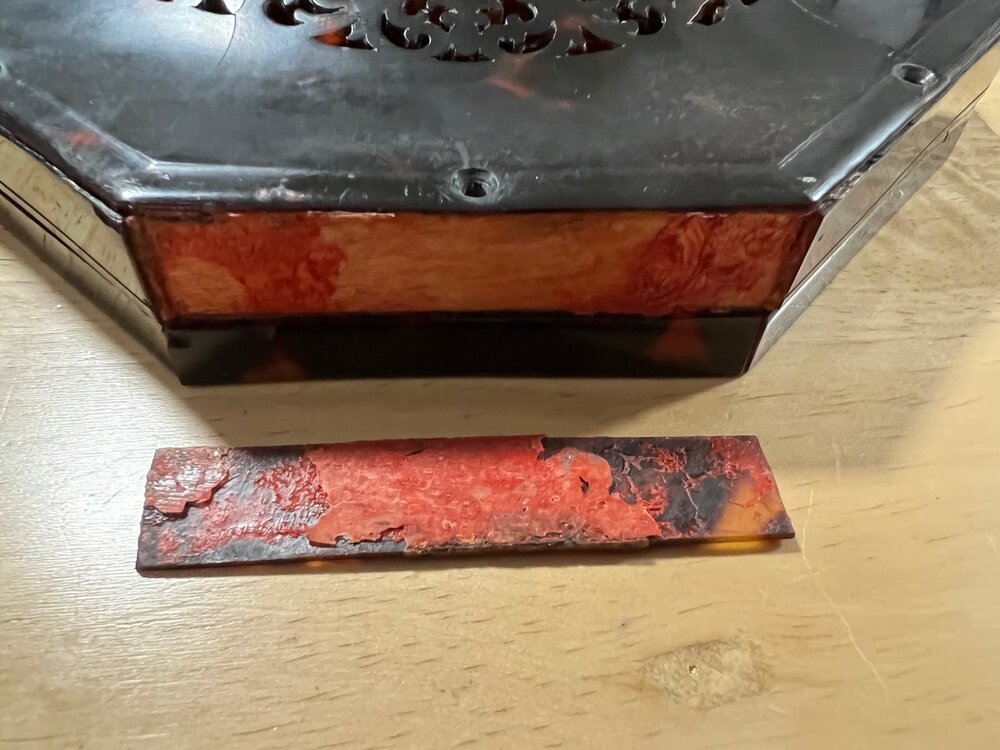

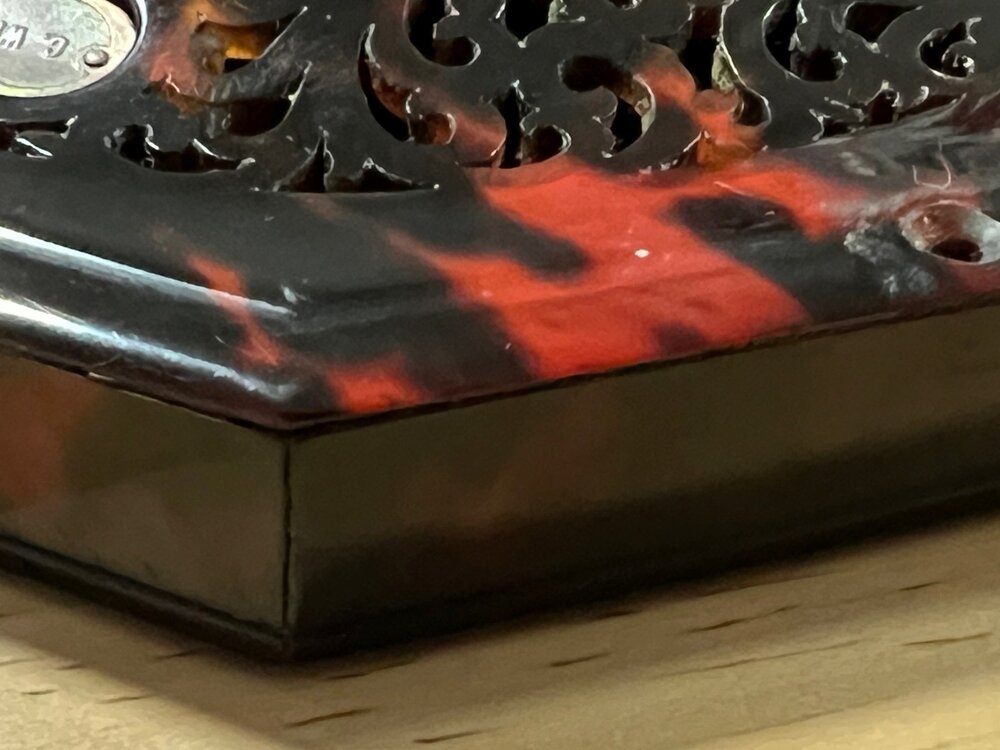
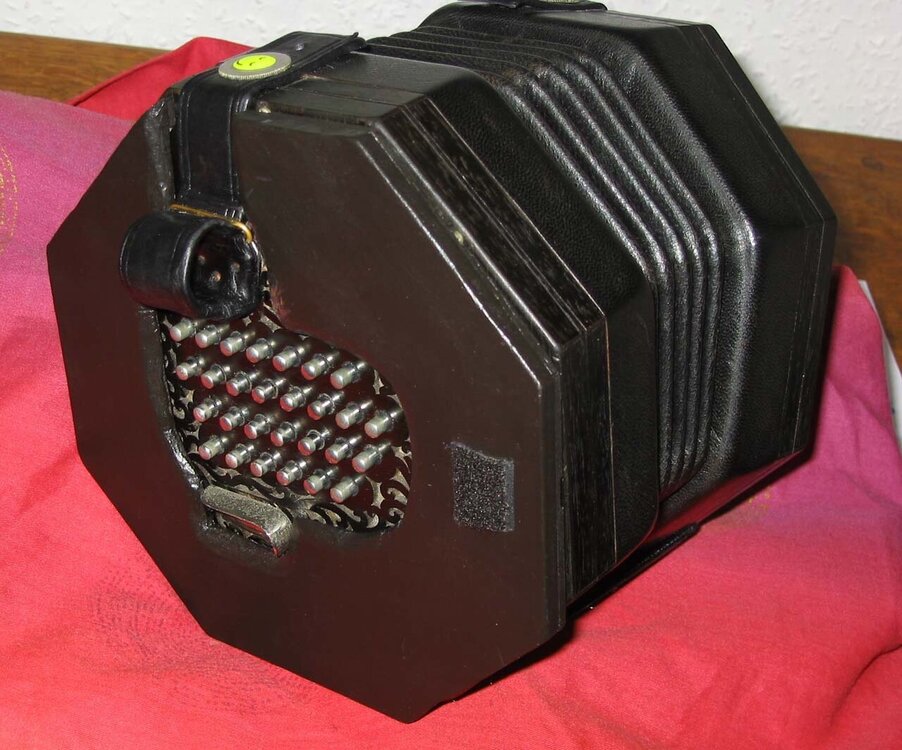
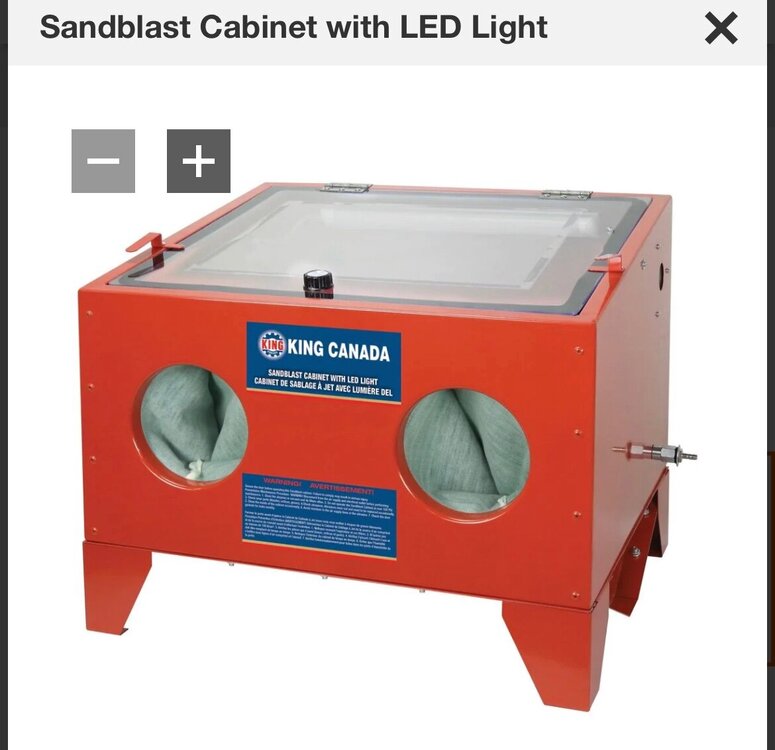

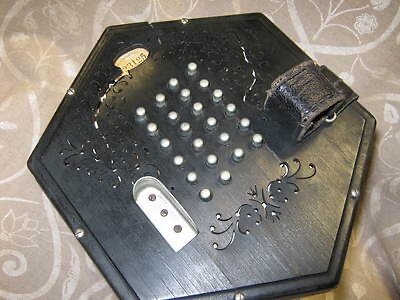
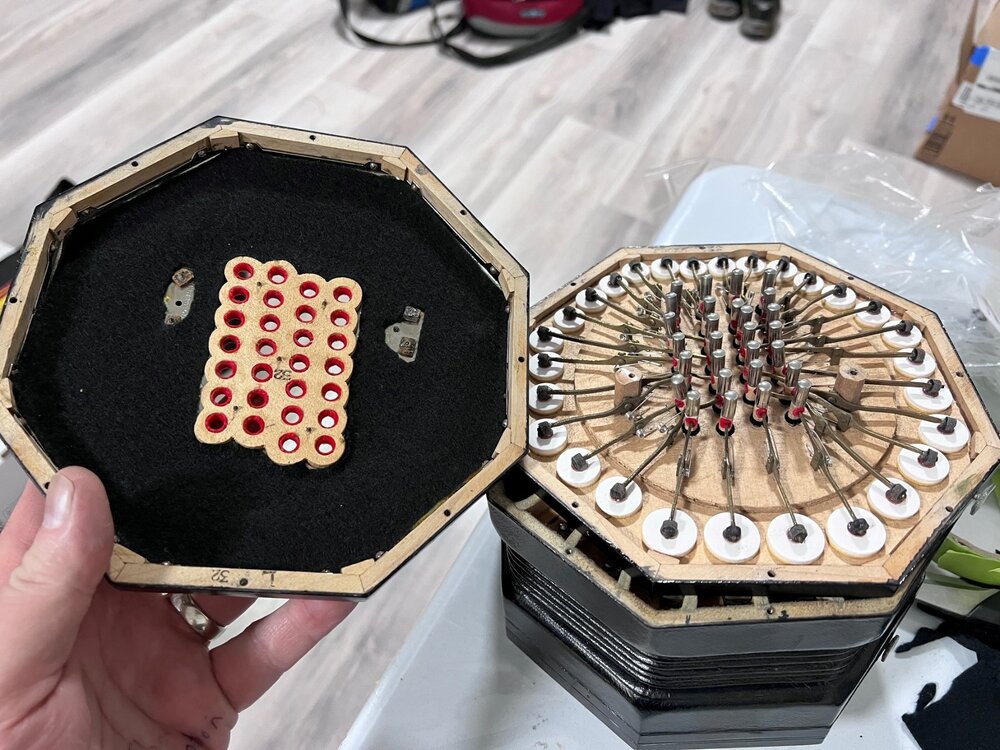

Tort Shell laminate red glue
in Instrument Construction & Repair
Posted
I'll flake some off and do some experiments on it. Good idea.